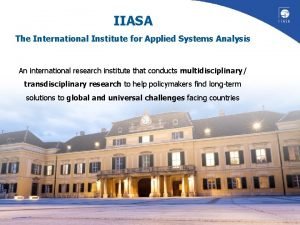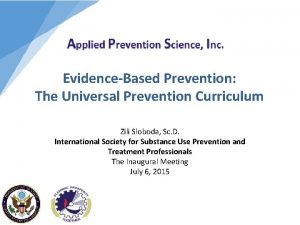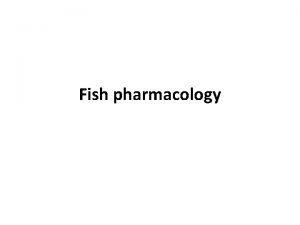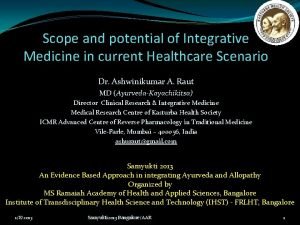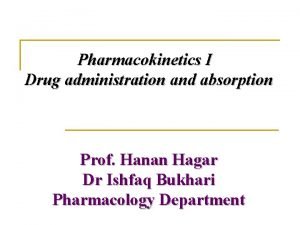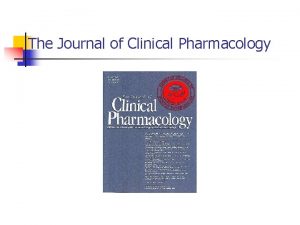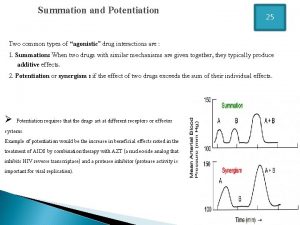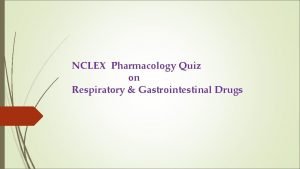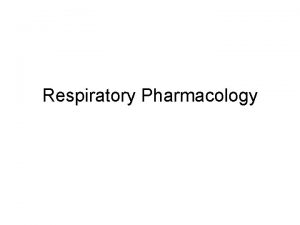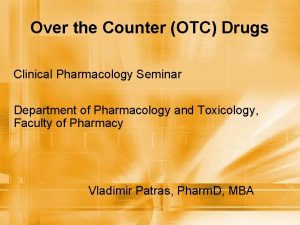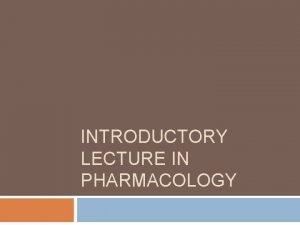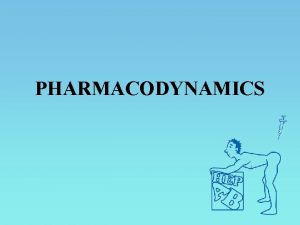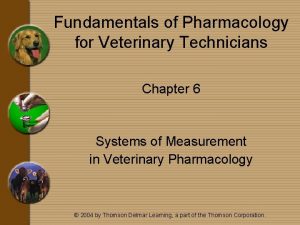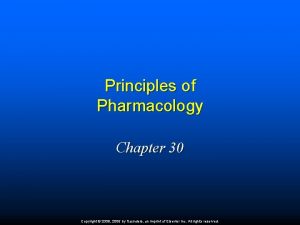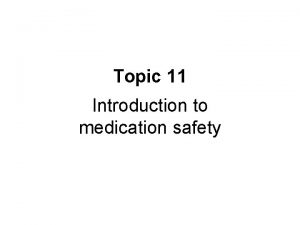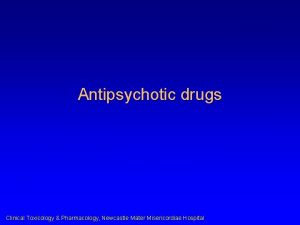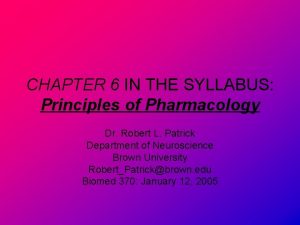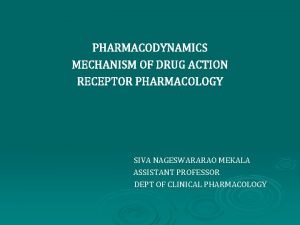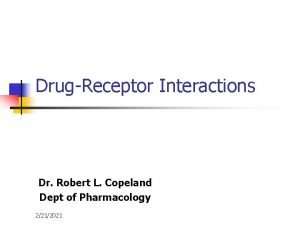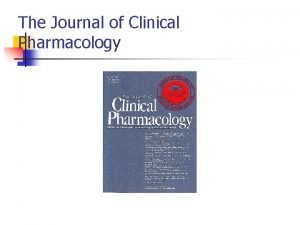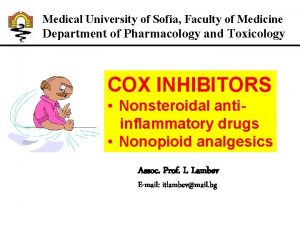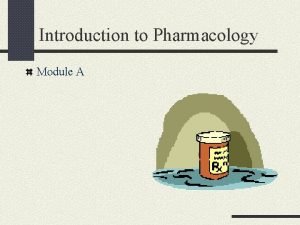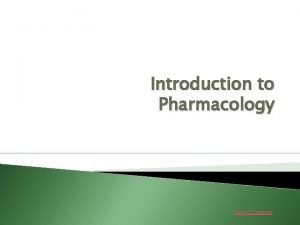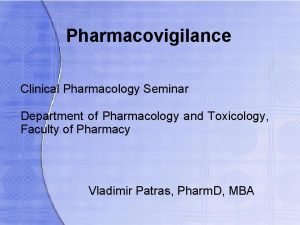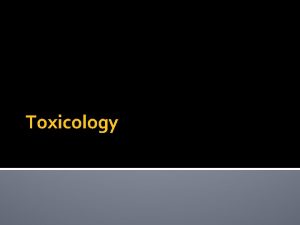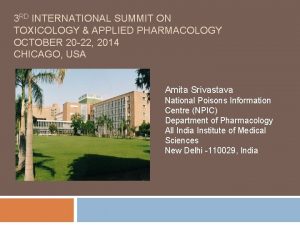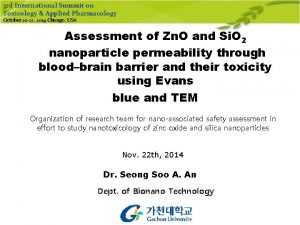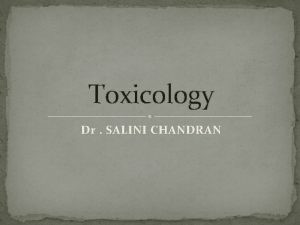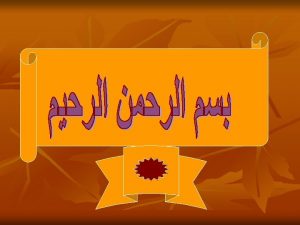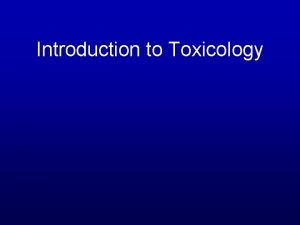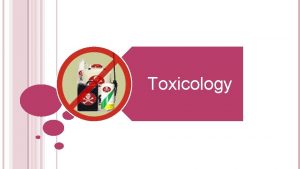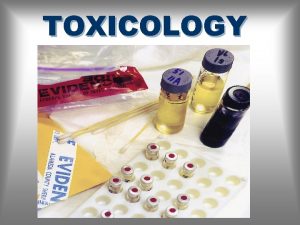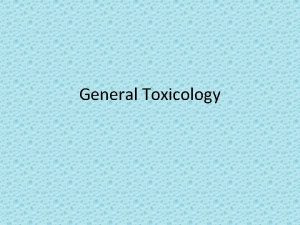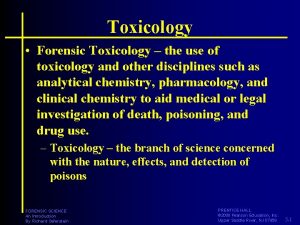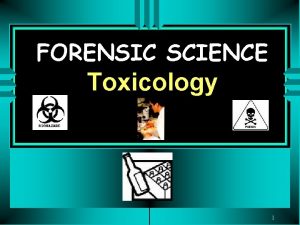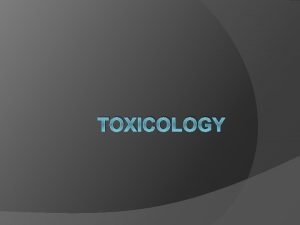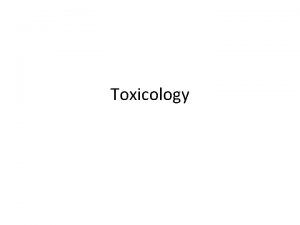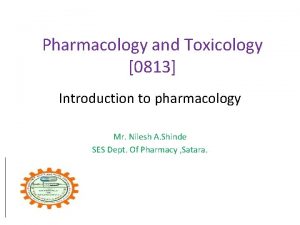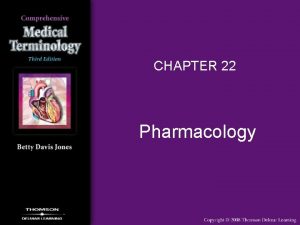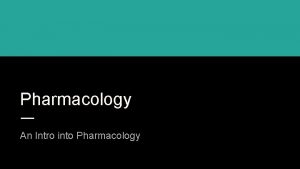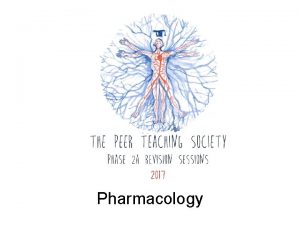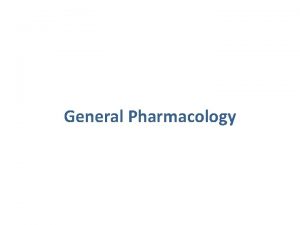3 RD INTERNATIONAL SUMMIT ON TOXICOLOGY APPLIED PHARMACOLOGY
































- Slides: 32

3 RD INTERNATIONAL SUMMIT ON TOXICOLOGY & APPLIED PHARMACOLOGY OCTOBER 20 -22, 2014 CHICAGO, USA Amita Srivastava National Poisons Information Centre (NPIC) Department of Pharmacology All India Institute of Medical Sciences New Delhi -110029, India

Snake bite poisoning A twelve years retrospective analysis of telephone calls reported to the National Poisons Information Centre, AIIMS Department of Pharmacology, AIIMS, New Delhi

Background Snake bite is a major environmental and occupational hazard in rural India and South Asian region India has one of the highest rates of death from snake bite in the world WHO has estimated the highest number of snake bites (83, 000) and deaths (11, 000) per annum in India 80% of snake bite victims in most of the developing countries seek traditional remedies before visiting a health care facility. This has resulted in high mortality Department of Pharmacology, AIIMS, New Delhi

Epidemiology As per few reports there are cases of approximately 200, 000 bites and 35, 000 -50, 000 snake bite deaths No reliable national data available High occurrence of snake bite reported in the states of Uttar Pradesh, Andhra Pradesh, Tamil Nadu, Kerala, and Maharashtra Incidences of snake bites are twice in male then female Majority of the bites are on the lower extremities 50% of bites by venomous snakes are dry bites that result in negligible envenomation Department of Pharmacology, AIIMS, New Delhi

Snake bite mortality in India: Study by Mohapatra et al (2011) High incidence states (Annual snake bite deaths) Uttar Pradesh: 8, 700 Andhra Pradesh: 5, 200 Bihar: 4, 500 Department of Pharmacology, AIIMS, New Delhi

Classification Worldwide, only about 15% of the more than 3000 species of snakes are considered dangerous to humans The family Viperidae is the largest family of venomous snakes, and members of this family can be found in Africa, Europe, Asia, and the Americas The family Elapidae is the next largest family of venomous snakes Traditionally big four include: 1. Elapidae (cobra and Krait) 2. Viperidae (Russell’s and saw scaled viper) Other snakes of medicinal significance– King cobra, monocle cobra, Asiatic cobra, Andaman cobra, saw scaled viper of northern India and the Hump nosed viper from Kerala There around 216 species of snakes in India, out of which 52 are recognized as poisonous Department of Pharmacology, AIIMS, New Delhi

Common Indian snakes • Cobra (Naja naja) • Common krait (Bungarus caeruleus), • Viperidae • Russell's viper (Daboia russelii) • Saw-scaled viper (Echis carinatus). • (Hump-nosed pit viper (Hypnale hypnale) Department of Pharmacology, AIIMS, New Delhi

Common Indian snakes: Characteristics Cobra Head of cobra is not distinct from neck which is dilatable and hood bears a binocellate mark on upper side. Krait The fangs are short and fixed. Steel blue coloured hexagonal scales on dorsal side with rows of paired white stripes across belly. Vipers Large mobile fangs which are canalized and retractable Russell’s Viper is brown in colour, elliptical patches in three rows on body Triangular head with prominent nasal opening Pit viper is uncommon in India Sea Snakes Short mobile fangs Compressed posteriorly and has a flat tail Department of Pharmacology, AIIMS, New Delhi

Who are at risk? Agriculture Ecotourism Dealing with venom Fishermen Hunters Department of Pharmacology, AIIMS, New Delhi

Common Indian snakes bites: Characteristics Cobra Krait Vipers Sea Snakes Local Effects • • • Pain Swelling May be followed by necrosis • • • Mild local pain Mild Swelling Weakness • • • Swelling at the site of bite Severe pain at the site Discoloration of skin around the site of bite • • Sharp initial prick Generalized aching Tenderness Stiffness Systemic Effects • • Ptosis Glossopharyngeal paralysis Rapid pulse Death due to respiratory paralysis • • Nausea Abdominal pain Visual disturbances Diarrhea Tachycardia Shock Arrhythmias • • • Hematuria Hemorrhage Epistaxis Melena hemoptysis Department of Pharmacology, AIIMS, New Delhi • • • Headache Myalgias Myopathy Rhabdomyolysis Thick feeling of tongue

Monitoring period in Envenomation Common Snakes Average period Range Cobra 8 hours 12 min – 120 hours Krait 18 hours 3 hours – 63 hours Russell’s Viper 3 days 15 min – 264 hours Saw-Scaled Viper 5 days 25 hours – 1 day Department of Pharmacology, AIIMS, New Delhi

Snake venom has different predominant effects depending on the family… Elapidae • Neurotoxic • Cardiotoxic • Nephrotoxic Viperidae • Hemotoxic • Necrotoxic Crotalidae • Necrotoxic Department of Pharmacology, AIIMS, New Delhi

Pathogenesis of Snake venom Signs/Sympt oms and potential treatments Cobra Krait Russell Viper Raw Scaled Viper Other Vipers Local Tissue Damage/pain Yes No Yes Yes Ptosis/ Neurotoxicity Yes Yes No No Coagulation No No Yes Yes Renal Problems No No Yes No? No No Neostigmine & Yes Atropine Department of Pharmacology, AIIMS, New Delhi

Study carried out to highlight the epidemiological features of snake bite calls reported to NPIC National Poisons Information Centre, Department of Pharmacology, AIIMS Provides round the clock service (24 x 7) • (91) -11 -26589391 • (91) -11 -26593677 • 1800 116 117 Receives calls from: Physicians Health care professionals/consultants General Public Government agencies Department of Pharmacology, AIIMS, New Delhi Recording of Calls of the enquirers, providing Information after consulting database, journals, referral books, Micromedex, US Healthcare series etc, Documentation, Data analysis and publications

Recording information Call Details • • • Identify the caller Note patient’s details- including age, occupation and sex Date and time of the bite- Day/ Night Site of the bite- Lower extremity/Upper extremity Fang mark- (single, double, scratches: Yes/No) Identification of snake: Poisonous/ Non poisonous ; Elapidae (Cobra, Krait), Russel’s viper Saw –scaled viper, Unidentified • Time Interval between bite & treatment given Prior First-aid received? • • Application of tourniquet- Yes/ No Local Application of substances like lime, chili, herbal remedies? Incision over bite site: Cryotherapy, Sucking over bite Any other treatments received Hospital admission ASV already administered No. of vials, Reactions with ASV Outcome Department of Pharmacology, AIIMS, New Delhi

April 1999 –March 2011: Total calls 13, 162 telephone calls, snake bite cases=290 Eight groups: Household products Calls from Delhi- 71. 35% Agricultural pesticides Calls from other states of India - 28. 65% Drugs Industrial chemicals Plants Bites and stings Miscellaneous Unknown groups § Adults involved - 77. 66% § Children involved - 22. 33% § Age group with the highest incidence of reporting was between 18 -40 years (82. 53%) § Males outnumbered females (M=73. 10%, F= 26. 89%) Department of Pharmacology, AIIMS, New Delhi

Incidence of snake bites Cobra and Krait 3% Unidentified 5% 9% Vipers Non-poisonous North India: Elapids South India: Viperidae 83% Department of Pharmacology, AIIMS, New Delhi

Site of snake bites • The victims were bitten mostly at night or midnight: 8% 10% 50% Nights 58. 73% Daytime 41. 26% • A significant number of cases occurred while the victims were asleep 32% Lower limb Upper limb Eyebrow, abdomen, ear, neck, face Unidentified bite area Department of Pharmacology, AIIMS, New Delhi

Incidence of snake bite varies with climate… 60. 00% Peak in July, August and September No bites December, January and February 50. 00% 40. 00% 30. 00% 20. 00% 10. 00% Monsoon season Spring season Summer season Department of Pharmacology, AIIMS, New Delhi Autumn season

Clinical Presentation Local effects observed at the bite site Systemic manifestations Pain 57. 14% Bleeding 7. 14% Swelling 26. 98% No local reaction 8. 73% Neurological 46. 44% Respiratory 28. 08% Generalized weakness 11. 61% Bleeding disorder 8. 23% Ocular paralysis 1. 49% Renal failure 2. 99% Asymptomatic 1. 15% Department of Pharmacology, AIIMS, New Delhi

Medical aid received The time interval: � Within 1 -4 hours 51. 77% � After 4 hours 48. 22% � Antivenom received 71. 25% Most of patients received 17 -20 vials of Polyvalent anti-snake venom (ASV) Two patients were given 140 ASV vials One patient was given 350 vials of ASV over 10 days without any clinical improvement Department of Pharmacology, AIIMS, New Delhi

Summary of data Majority of the snakebite cases were due to Cobras and Kraits Increased incidence of bites during Rainy/Monsoon season High incidence of bites reported at night Males outnumbered females (M= 73. 10%, F= 26. 89%) Highest incidence reported between 18 -40 years Incidence of bites in lower extremities was high (50%) Sign of local envenomation was predominant, with pain (57. 14%) Early administration of antivenom reduced the risk of complications The limitation of this study was the data collected from telephonic calls. We do not have the prognosis of the snake bite cases reported to the respective hospitals Department of Pharmacology, AIIMS, New Delhi

Management - Pre Hospital Keep the victim calm Wash the bite site with soap and water/wound should clean with antiseptic Immobilize the bitten area Do not cover the bite area and puncture marks What not to do ? No cryotherpy No incision at the bite site Do not burn the wound Do not suck the wound with mouth Potassium permanganate should never be used Department of Pharmacology, AIIMS, New Delhi

Hospital & Antivenom Therapy Maintain airway, breathing and circulations Oxygen supplementation Intravenous fluid Vasopressors for hypotensive shock Antihistamines anaphylactic reactions Analgesics alleviate pain Antibiotics and antitetanus Investigation Blood samples for total blood count, coagulation profile, serum biochemistry renal and hepatic functions 20 WBCT ASV reactions Early Anaphylactic reactions & Anaphylaxis (10 -180 min) Department of Pharmacology, AIIMS, New Delhi

Anti-snake venom (ASV) is the mainstay of treatment ASV is produced both in liquid and lyophilized � liquid ASV requires a reliable cold chain and has 2 -year shelf life. � Lyophilized ASV, in powder form, has 5 -year shelf life and requires only to be kept cool. No monovalent ASV Polyvalent ASV is Questionable ? Humpnosed pit viper (Hypnale hypnale) Saw-scaled viper (Echis carinatus sochureki) Department of Pharmacology, AIIMS, New Delhi

Administration of antivenom Freeze-dried (lyophilised) antivenoms are reconstituted, usually with 10 ml of sterile water. The freeze-dried protein may be difficult to dissolve Skin and conjunctival “hypersensitivity” tests may reveal Ig. E mediated Type I hypersensitivity to horse or sheep proteins but do not Predict the large majority of early (anaphylactic) or late (serum sickness type) antivenom reactions. Since they may delay treatment and can in themselves be sensitizing, these tests should not be used. Epinephrine should always be drawn up in readiness before antivenom is administered. Antivenom should be given by the intravenous route whenever possible. Department of Pharmacology, AIIMS, New Delhi

Constraints in management of snake bite Problem in management • Superstitions surrounding snake bites, apprehension and terror towards non-traditional medicine • Time wasted in going to traditional/local healers • Lack of awareness among people for seeking early medical help Availability of ASV reduces the bite to needle time • Sensitized early administration of ASV results in better outcomes • ASV neutralizes circulating snake venom, as while time elapses more and more, venom is bound to the target tissues becoming less amenable to neutralization by ASV. Department of Pharmacology, AIIMS, New Delhi

Present Scenario • Rural people trust herbal and other traditional forms of treatment • Traditional practitioners are readily available in the village and their services are cheap • About 50% of bites by venomous snakes result in envenoming (injection of sufficient venom to cause local and/or systemic effects) even useless remedies will appear effective in a proportion of cases. However, these treatments have no scientifically demonstrable effectiveness, may be harmful and will delay the patients’ arrival in hospital. Alternative therapies should therefore be discouraged or the traditional practitioners educated to refer patients with definite symptoms of envenoming Department of Pharmacology, AIIMS, New Delhi

Some important points NPIC works round the clock to provide its services Awareness in the local population on providing first aid to snake bite Local healers/ tantriks/ojhas should be avoided in snake bites cases Peripheral doctors should be trained on the diagnosis and management of snake bite use of anti venom In absence of symptoms, victim should be observed for at least 24 hours Country wide epidemiological picture can’t be drawn due to non existence of central registry of cases Department of Pharmacology, AIIMS, New Delhi

Prevention Community education is the key to reducing the risk of snake-bite. Encourage safer working and walking by using adequate footwear Avoid walking through knee high grass Wear leather ankle shoes for out door activites Protective clothing and carrying a light after dark Safer sleeping by using a well tucked-in mosquito net Victims of bites are encouraged to travel to hospital without delay, Not wasting time with traditional treatments. Department of Pharmacology, AIIMS, New Delhi

References Mohapatra B, Warrell DA, Suraweera W, Bhatia P, Dhingra N, Jotkar RM, Rodriguez PS, Mishra K, Whitaker R, Jha P; Million Death Study Collaborators. Snakebite mortality in India: a nationally representative mortality survey. PLo. S Neglected Tropical Diseases. 2011 Apr 12; 5(4): e 1018. doi: 10. 1371/journal. pntd. 0001018. Kasturiratne A, Wickremasinghe AR, de Silva N, Gunawardena NK, Pathmeswaran A, et al. The global burden of snakebite: a literature analysis and modelling based on regional estimates of envenoming and deaths. PLo. S Med 2008; 5 e 21818986210 Warell DA. Epidemiology of snake-bite in South-East Asia Region. In: Warrell DA (ed. ) Guidelines for the management of snakebite. New Delhi: WHO regional office for Southeast Asia. 2010 Suchithra N, Pappachan J M, Sujathan P. Snakebite envenoming in Kerala, South India: clinical profile and factors involved in adverse outcomes. Emergency Medicine Journal 2008; 25: 200 -204 Gupta YK, Peshin SS. Snake bite in India: current scenario of an old problem. Journal of Clinical Toxicology 2014; 4: 182. doi: 10. 4172/2161 -0495. 1000182. Gupta YK, Peshin SS. Do herbal medicines have potential for managing snake bite envenomation? Toxicology International 2012; 19(2): 89 -99. Bhardwaj A and Sokhey J. Snake bites in the hills of north India. National Medical Journal of India 1998; 11: 264 -265 Bawaskar HS, Bawaskar PH, Punde DP, , Inamdar MK, Dongare RB, Bhoite RR. Profile of snake bite envenoming in rural Maharashtra, India. Journal of Association of Physicians of India 2008; 56: 88. Department of Pharmacology, AIIMS, New Delhi

Department of Pharmacology, AIIMS, New Delhi
 Toxicology and applied pharmacology
Toxicology and applied pharmacology Annual review of pharmacology and toxicology
Annual review of pharmacology and toxicology International institute for applied system analysis
International institute for applied system analysis Iupap
Iupap Applied prevention science international
Applied prevention science international International university of applied sciences bad honnef
International university of applied sciences bad honnef Advantages and disadvantages of drugs
Advantages and disadvantages of drugs Fish pharmacology
Fish pharmacology Parkinson's disease definition
Parkinson's disease definition Reverse pharmacology
Reverse pharmacology Define pharmacology
Define pharmacology Clinical pharmacology
Clinical pharmacology Drug summation examples
Drug summation examples Respiratory pharmacology quiz
Respiratory pharmacology quiz Guaifenasin
Guaifenasin Spremicides
Spremicides What is pharmacology
What is pharmacology Tachyphylaxis in pharmacology
Tachyphylaxis in pharmacology Fundamentals of pharmacology for veterinary technicians
Fundamentals of pharmacology for veterinary technicians Chapter 30 principles of pharmacology
Chapter 30 principles of pharmacology Rationale meaning in pharmacology
Rationale meaning in pharmacology Tactcardia
Tactcardia Basic principles of pharmacology
Basic principles of pharmacology Receptors in pharmacology
Receptors in pharmacology Pharmacology definition
Pharmacology definition Define pharmacology
Define pharmacology Filtration pharmacology
Filtration pharmacology Basic & clinical pharmacology
Basic & clinical pharmacology Pharmacology module
Pharmacology module Zero order elimination drugs
Zero order elimination drugs Pharmacology of drugs acting on respiratory system
Pharmacology of drugs acting on respiratory system Slidetodoc.com
Slidetodoc.com Clinical pharmacology seminar
Clinical pharmacology seminar


